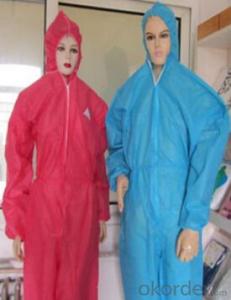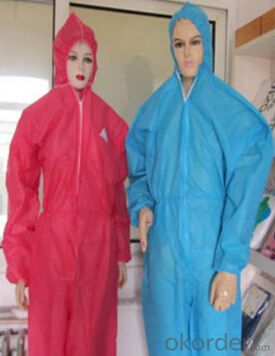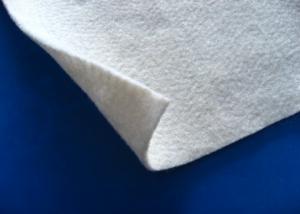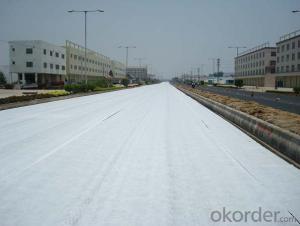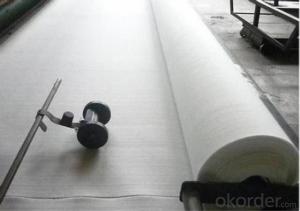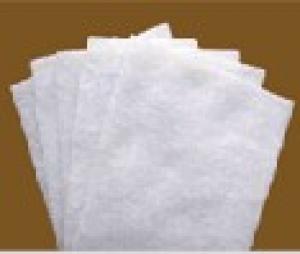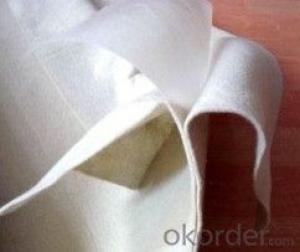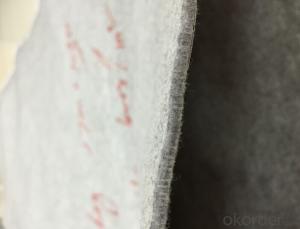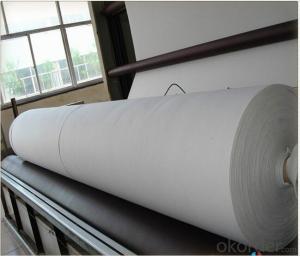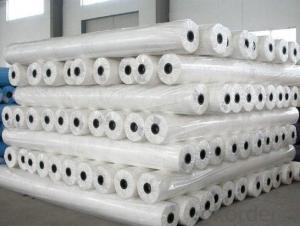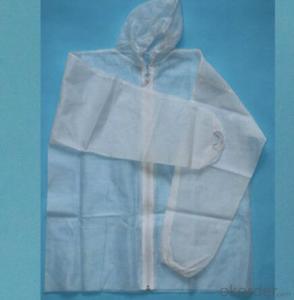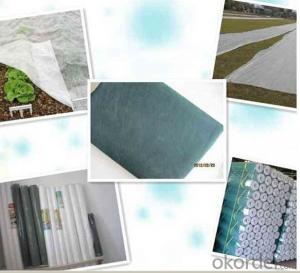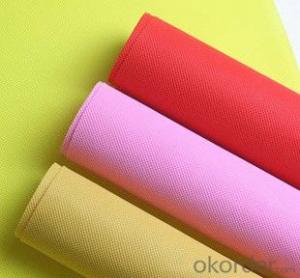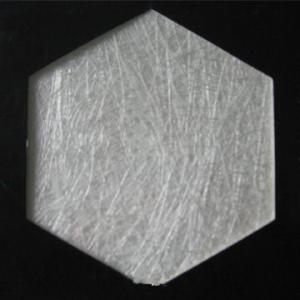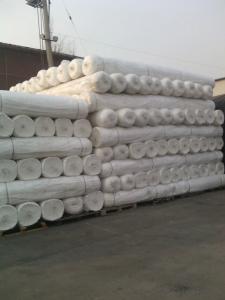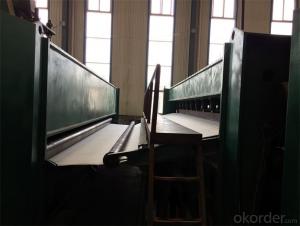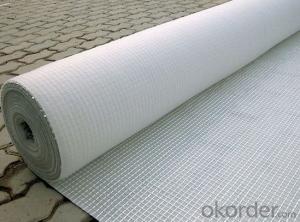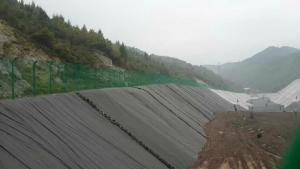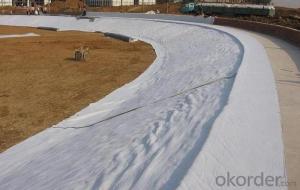PP Spunbonded Nonwoven Fabric Cloth Composite Geotextile Protect from Disease
- Loading Port:
- China Main Port
- Payment Terms:
- TT OR LC
- Min Order Qty:
- -
- Supply Capability:
- -
OKorder Service Pledge
OKorder Financial Service
You Might Also Like
PP Spunbonded Nonwoven Fabric cloth protect from desease
is used to protect the t can protect the doctors or workers safely and protect them from desease.
Specification of PP Spunbonded Nonwoven Fabric cloth protect from desease:
100% Polypropylene/100% PP
Color:Any color can be available
GSM(gram per square meter): 9-180GSM
Roll Width 4-320cm
Roll Length According to your requirement
Technics Nonwoven Spunbonded
Feature Waterproof, Mothproof, Eco-friendly, Non-toxic, Breathable, Anti-Bacteria
Packing of PP Spunbonded Nonwoven Fabric cloth protect from desease:
Each roll is wrapped in a plastic bag with label specification with paper tube inside .
Feature Waterproof, Mothproof, Eco-friendly, Non-toxic, Breathable, Anti-Bacteria
- Q: How do geotextiles aid in the reduction of liquefaction?
- Geotextiles aid in the reduction of liquefaction by providing reinforcement and stabilization to the soil during seismic events. They act as a barrier between the soil particles, increasing its strength and preventing the buildup of excess pore water pressure. This helps to maintain the soil's stability and reduces the risk of liquefaction occurring.
- Q: Can geotextiles be used in erosion control in coastal bluff stabilization?
- Yes, geotextiles can be used in erosion control in coastal bluff stabilization. Geotextiles are often used as a reinforcement material to prevent soil erosion and provide stability to coastal bluffs by reducing water flow and preventing the loss of soil particles. They can be installed as a layer between the soil and vegetation or as a retaining wall to effectively control erosion and improve the stability of coastal bluffs.
- Q: Hope expert expert to give the answer
- 1, side ditch, drains, blind ditch, cut ditch are road drainage facilities. 2, the drainage system is divided into the form of surface water and row of groundwater. Row of surface water: side ditch, drains, cut ditch; row of groundwater: blind ditch. 3, according to the road plane position is divided into: side ditch in the road side; drains can also be in the road side in the central zone; trench in the cutting section above; blind ditch in the roadbed width range. 4, according to the direction of the road is divided into: the direction of the ditch along the way; drains can also be the direction of the road can also cross the direction; cut the ditch along the way; blind ditch can be any direction. 5, according to the drainage function and cross-sectional size is divided into: drainage section of the largest; blind ditch second; side ditch, cut the smallest ditch. 6, according to the construction materials can be divided into: ditch can be pulp, dry piling, ramming, etc .; drains for the pulp or dry puzzle; blind ditch for the dry, pulp, gravel, concrete, ) And other combinations; cut ditch for the dry, pulp, ramming and so on. 7, according to the embankment type is divided into: fill, fill in the dug with a ditch, ditch, blind ditch; digging side, half filled half digging section ditch, drains, blind ditch, The ditch appears only in the digging section.
- Q: What are the key considerations for geotextile installation in corrosive environments?
- The key considerations for geotextile installation in corrosive environments include selecting a geotextile material that is resistant to corrosion, ensuring proper anchoring and fastening methods to prevent movement or damage, conducting regular inspections and maintenance to identify any signs of corrosion, and implementing appropriate protective measures such as using a geotextile with a higher corrosion resistance rating or adding a barrier layer to minimize exposure to corrosive agents.
- Q: Are geotextiles suitable for use in rain garden systems?
- Yes, geotextiles are suitable for use in rain garden systems. Geotextiles help to filter and stabilize the soil, control erosion, and prevent clogging of drainage systems in rain gardens, making them an ideal choice for enhancing the functionality and longevity of these systems.
- Q: Are geotextiles suitable for use in geocells?
- Yes, geotextiles are suitable for use in geocells. Geocells are three-dimensional honeycomb-like structures used for soil stabilization, erosion control, and reinforcement. Geotextiles, which are permeable fabrics, can be placed inside the geocells to provide additional support and prevent soil erosion. The geotextiles enhance the overall strength and stability of the geocells, making them an ideal combination for various geotechnical applications.
- Q: Can geotextiles be used in pond liner applications?
- Yes, geotextiles can be used in pond liner applications. They are often used as an additional layer in pond liners to provide reinforcement, filtration, and separation. Geotextiles help prevent soil erosion, improve water quality, and enhance the overall durability and performance of the pond liner system.
- Q: How do geotextiles help with soil separation and stabilization?
- Geotextiles help with soil separation and stabilization by acting as a barrier between different soil layers, preventing mixing and maintaining their individual characteristics. They also enhance soil stability by increasing its shear strength, preventing erosion, and improving drainage.
- Q: Can geotextiles be used in shoreline protection projects?
- Yes, geotextiles can be used in shoreline protection projects. Geotextiles are often utilized in coastal erosion control and shoreline stabilization efforts as they can help to prevent soil erosion, control sediment movement, and enhance the stability of shoreline structures.
- Q: How do geotextiles help in preventing soil erosion in agricultural fields?
- Geotextiles help prevent soil erosion in agricultural fields by acting as a barrier between the soil and the erosive forces such as water and wind. They provide stabilization and reinforcement to the soil, reducing the risk of erosion. Additionally, geotextiles improve water infiltration, reduce surface runoff, and enhance soil moisture retention, promoting healthier plant growth and preventing soil loss.
Send your message to us
PP Spunbonded Nonwoven Fabric Cloth Composite Geotextile Protect from Disease
- Loading Port:
- China Main Port
- Payment Terms:
- TT OR LC
- Min Order Qty:
- -
- Supply Capability:
- -
OKorder Service Pledge
OKorder Financial Service
Similar products
Hot products
Hot Searches
Related keywords
